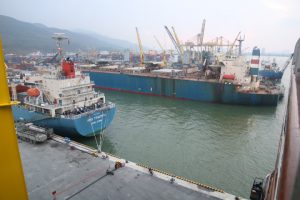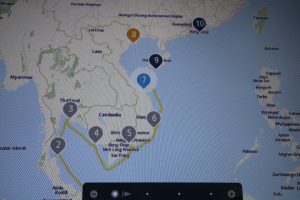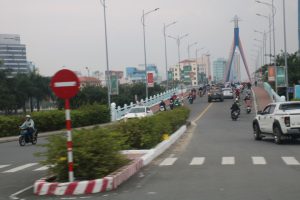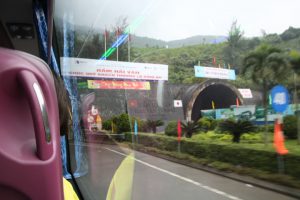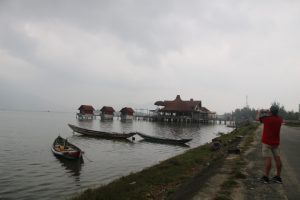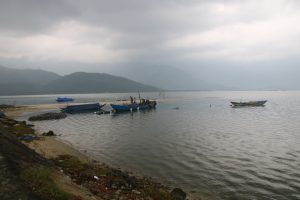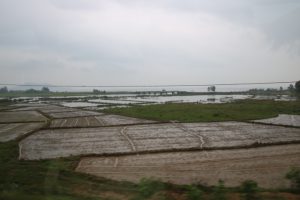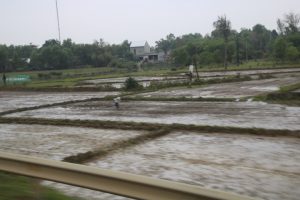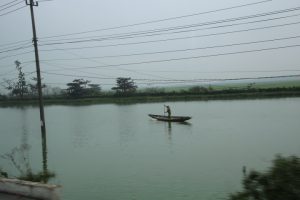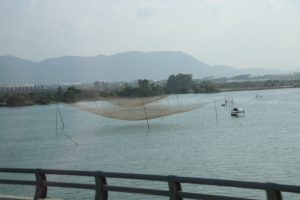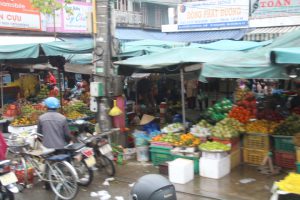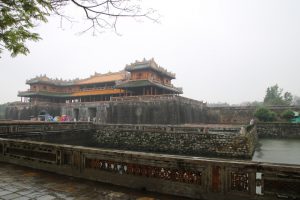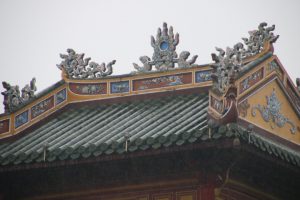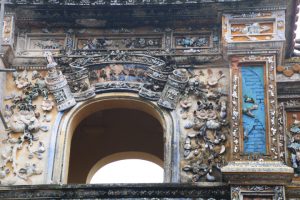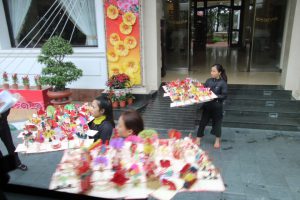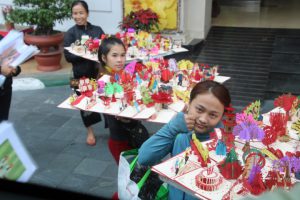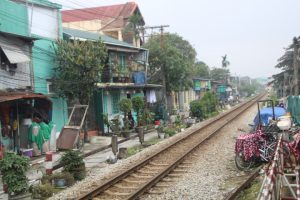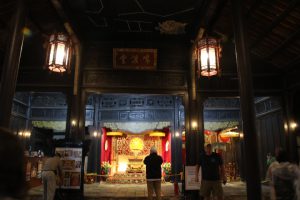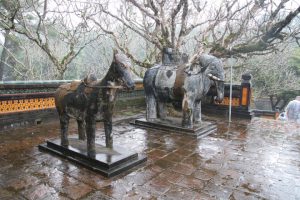We arrived at Da Nang, Vietnam around 6:30 a.m. and will use this as a base from which to explore the Imperial City of Hue. The city was the capital of the Nguyên Empire during their reign from 1802 – 1945.
To reach Hue we drove along the dramatic coastline and through a mountain range. Here we used the Hai Van tunnel which, at just over 6km in length, is the longest in Vietnam passing through the mountain range where the rain forested slopes peak at 4,000ft. Looking back from here we saw the very large city of Da Nang lining the bay of the Gulf of Da Nang.
During the Vietnam War the largest US airbase was here. We were told that the mountain range protects Hue from weather systems from the southeast of the Pacific. This did not seem to work for us for at each location we visited we experienced heavy tropical rain! When the rain stopped everywhere dried very quickly but that was over lunch.
The journey took us past rice fields being prepared for the second crop and Chinese style fishing nets as well as oyster beds and fish farms in the many lagoons along the cuspate coastline (off-shore sandbars forming protected waters near land).
In Hue we visited the Imperial City. It was built between 1804 – 1833 and is heavily fortified with 2 metres thick and 10km long walls. The moat is 30 metres wide and 4 metres deep and is spanned by bridges and ten gateways. There are two sections here, the Imperial enclosure and the Forbidden City. The former housed the emperor’s residence, temples and palaces. What we saw today is only a small part of the original as the area was badly bombed during the French and American wars. There is a lot of neglected masonry stained by rainwater, moss and weeds but this adds to the atmosphere especially in heavy rain and high humidity. The Forbidden City in the centre of the citadel was reserved solely for the use of the emperor – hence the name. Everyone else was forbidden to enter. Today it is a mass of crumbling remains. To access all this we used the main entrance at the Ngo Mon Gate.
After lunch we drove through the forest to the Tomb of Tu Duc. This is one of a number of extravagant mausoleums of the rulers of the Nguyên Dynasty along the banks of the Perfume River, named such because of the scents of lotus flowers and others growing on the banks that contrasted with the stink of the city. The tomb was designed by the emperor himself as a miniature palace for use before and after his death. It is said that the enormous expense and the forced labour led to a coup plot that was suppressed.

